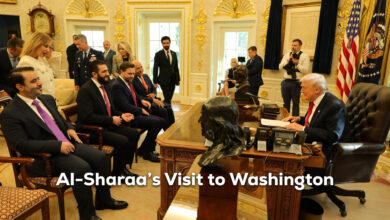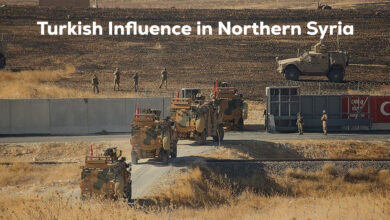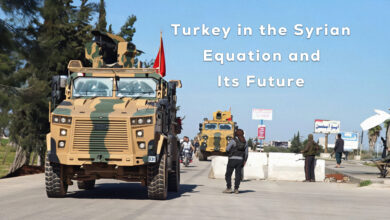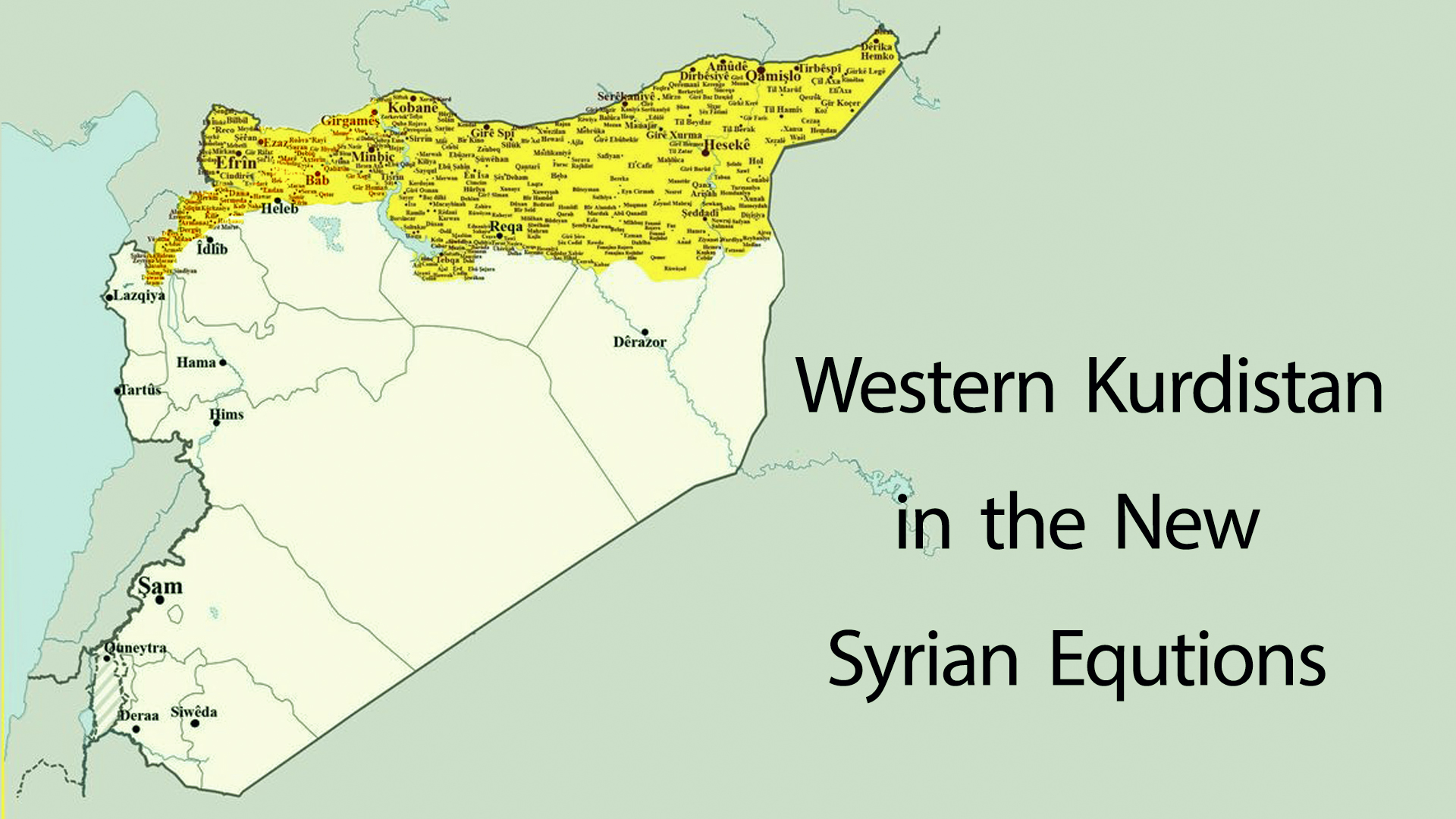
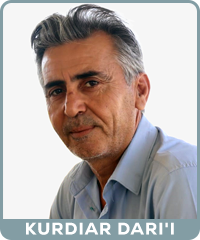 Since 2011, amidst the conflicts and confrontations between international and regional powers, Syria has become an arena for settling scores and hegemony Hundredsof armed groups emerged, divided among international and regional powers, and began to act according to their own agendas. In northern and eastern Syria, the People’s Protection Units, the Women’s Protection Units, and the Syrian Democratic Forces were established with the aim of protecting the people of the region.
Since 2011, amidst the conflicts and confrontations between international and regional powers, Syria has become an arena for settling scores and hegemony Hundredsof armed groups emerged, divided among international and regional powers, and began to act according to their own agendas. In northern and eastern Syria, the People’s Protection Units, the Women’s Protection Units, and the Syrian Democratic Forces were established with the aim of protecting the people of the region.
After the expansion of Islamic jihadist groups in the region, spreading and committing massacres, the People’s Protection Units (YPG), the Women’s Protection Units (YPJ), and the Syrian Democratic Forces (SDF) confronted these groups and played a major role in liberating northeastern Syria from the clutches of terrorism.Over the years, these forces were able to establish an autonomous administration with the participation of all components in the region, and became a key player in the Syrian equation .The Autonomous Administration has been subjected to continuous attacks, especially by Turkey, which occupied (Afrin, Gire Spi, Sere Kaniye ) under what it called operations (Euphrates Shield, Olive Branch,Peace Spring), with the aim of separating the Kurdish regions and eliminating the democratic autonomous administration. Turkey, through understandings with Russia, America, the Syrian regime, and Iran, launched multiple attacks against the autonomous administration.
December 8, 2024 was an earthquake in the course of the Syrian crisis for all the Syrian people, and for international, regional and local powers, and the calculations of all parties were intertwined; Where some forces were defeated, others were victorious, some parties retreated, and others advanced. The Syria that will be governed after December 8, 2024, will be completely different from the Syria that existed before that date. Many equations in the region have changed, and new ones have emerged.
New Equations in Syria
Before the fall of Assad on December 8, 2024, the active forces in the Syrian arena at the international and regional levels, were: Syria (Assad’s army), Turkey, Iran Russia, and the United States (the international coalition). In addition to local forces the Syrian Democratic Forces (SDF), the National Army, Hayat Tahrir al-Sham, and to a lesser extent ISIS. Even before the fall of the Syrian regime (the Baath regime), Turkey was demanding a meeting with Assad; in other words, it saw Its interest lies in reaching an agreement with Assad.
However, the developments that led to Hayat Tahrir al-Sham’s control over Damascus, as well as the positive and non-hostile positions of the European countries and America, in addition to Iran and Russia’s lack of concern about these developments, all of this gave Turkey the courage to consider the collapse of the Syrian regime as a divine gift. It was granted to it. Russia, Iran, and the forces associated with the ” Axis of Resistance” were defeated, and their hopes for America’s withdrawal from Syria under Trump were very high. Among the forces that entered Damascus, Hayat Tahrir al-Sham and groups known as the National Army, are directly linked to Turkey, so Turkey immediately saw Syria as an area for gaining power; So, it started talking Regarding military, economic, and security agreements with Damascus, as well as discussions about the regime, the relationship between Damascus and the Syrian Democratic Forces, and determining Syria’s future. Qatar is also its partner in all these moves.
Sure, Ahmed al- Sharaa (al-Julani) knows very well that His assumption of power was in accordance with an international and regional agreement, and that no matter what he finds himself close to Turkey and Qatar, but he does not possess the will that would allow him to act according to the demands of the two countries, without taking Israel, Europe, America, Saudi Arabia, and the Emirates into consideration. Therefore, Al- Shara’a does not want to enter into conflicts with Israel, nor to evade From the demands of Europe and America, and not to disappoint the hopes of Turkey (which is very close to him), this is on the one hand, On the other hand, he does not want to lose the help of the Arabian Gulf countries: so Al-Shara’a is moving Between these parties, but the matter is not that simple, rather it is very difficult for Al-Shara’a to be able to satisfy all parties. On the Syrian scene, there is an overlap and contradiction in policies, and after the fall of Assad, Syria entered a transitional phase and its future was drawn according to for international, regional and local equations
Regional and International Equations:
The fall of the Assad regime has shuffled the cards of both Iran and Russia, especially Iran. Russia, according to many political analysts, has been deceived in the Syrian file, but if we know that Russia is not a small country, and that it has an imperial legacy and a long-standing Soviet experience, then it will be difficult to accept these assumptions and analyses. Therefore, it is most likely that Russia has entered into bargaining Regarding the fall of Assad, and it may even be the case In the Ukrainian file, it is possible that it benefited from the issue of its Mediterranean bases in Syria. As for Iran, it was defeated, especially after Israel’s intrusion into the Syrian equation, and before that, the defeat of Hezbollah and Hamas; and as a result, Iran ‘s “Shiite Crescent” project was foiled.
The United States, Israel, and Turkey emerged as major players, while Europe, led by France and Germany, increased the extent of its political and diplomatic intervention in Syria, and placed the situation in northern and eastern Syria (western Kurdistan) and Shara’s handling of the Kurdish issue as a criterion for accepting Shara’s government, France in particular, which affirmed its continued support for the autonomous administration and the Kurds in western Kurdistan (Rojava).
Of course, the United States has not withdrawn from the region, as Turkey expected. Rather, the United States is constantly coordinating with the Syrian Democratic Forces, to make a sure that Syria is a country in which all components participate in the process of rebuilding. The United States is also focusing on the security of Israel and the fight against ISIS as conditions for accepting the new government in Damascus. Yes, there are attempts to assign the task of finding solutions for Turkey, Saudi Arabia, and Israel. However, under the current circumstances, the United States cannot abandon the region. There are many intertwined issues and files on which America’s allies disagree. For example, Turkey wants a centralized Syria without autonomous administration and without the rights of the components. It also sees Syria as part of Turkey and aspires to impose its power and projects on Damascus. However, Israel, which is not hostile to Turkey and does not seek any Turkish power in Syria, stands in opposition to Turkey and is working to mobilize the United States diplomatically. To weaken Turkish power, Israel seeks to agree to a decentralized Syria and also agrees to the existence of autonomous administration and a role for the Kurds in Syria. On the other hand, the fight against ISIS continues, and as stated by the US President’s representative, the Syrian Democratic Forces are of great importance to the US Congress in Syria. For their part, Saudi Arabia and the Arabian Gulf countries want Syria to be a state according to their own wishes. On the one hand, they want it to be a centralized state, while on the other, they do not want it to be under Turkish power, such that it would pose a terrorist threat to the Arab world.
This means that there are key players in Syria: the United States, Turkey, Israel, France, and Saudi Arabia. The combined presence of these parties has created a new equation in Syria.
Local equations:
With the fall of Assad, the local equations also changed. For three consecutive months, the National Army loyal to Turkey, sought to control the “Rojava” Dam and enter the eastern Euphrates, but its attempts were in vain and it did not succeed. Ahmed al-Shara’a and the Damascus government – despite its claim that it’s a cohesive government and the master of its own decisions – did not move a finger and remained inactive. This means that it was unable to stand up to Turkish decisions at the same time, this government wanted to eliminate the Autonomous Administration However, the resistance of the Syrian Democratic Forces, as well as the American and French positions, contributed to stopping the drums of war. As a result, the Abdi -Shara’a Agreement was signed, and in practice, two governments were formed in Syria, one in Damascus and the other in Qamishli; meaning the Autonomous Administration and the central government. The National Army was also considered a unit within the New Syrian Army. During this time, massacres were committed against the Alawites, and great pressure was exerted on the Druze. This means that the main parties in the local equation today are: the Syrian Democratic Forces, Hayat Tahrir al-Sham, and the Druze.
Western Kurdistan (Rojava) within these equations:
Far from the expectations that were being promoted prior to the fall of Assad, especially according to the claims of Turkey and its mercenaries, which indicated that the fate of the Autonomous Administration and the Syrian Democratic Forces were linked to the fate of the regime; that is the fall of the regime would mean the fall of the Autonomous Administration, and that the role of the Syrian Democratic Forces in fighting ISIS would be meaningless. The United States would withdraw from the region, and Turkey would assume control of the ISIS file and the northeastern Syria file. However, after the fall of the Assad regime and the weakening of the Russian and Iranian roles in Syria, what pleased and delighted Turkey was the idea that it would eliminate the Autonomous Administration, appoint itself as the decision-maker for Hay’at Tahrir al-Sham, and draw the roadmap for Syria’s future. However, the Autonomous Administration presented itself as a key player in the new equation in Syria, and its presence or absence became a criterion for drawing Syria’s future and its shape, just as it became a criterion for determining the fate of components and for drawing the roadmap for the Middle East in general.
In the face of Turkish actions in Syria, Israel’s voice is getting louder, stating, “The Kurds are our natural allies. We will support the Kurds. We do not accept a Turkish presence within Syrian territory. We will not replace Turkish and Salafist power with Iranian power”. Israel has even gone so far as to fight Turkey.
For their part, Germany and France emphasized the importance of building a democratic Syria, as well as the necessity of participation of the Syrian Democratic Forces (SDF) and Kurds, in the new government. France explicitly declared its commitment to supporting the SDF and the Kurds. American officials have also repeatedly stated that American forces will remain in the region, Officials have shown the Syrian Democratic Forces as an American ally.
At the same time, these parties imposed their conditions on Ahmed al-Sharaa (al-Julani), including guaranteeing the rights of components and minorities; al-Sharaa had promised to meet those conditions.
On March 10, 2025, an agreement was signed between the Syrian Democratic Forces (SDF) and Hayat Tahrir al-Sham (HTS) Afterward, Turkey’s voice faded and it was unable to move in Syria as it had intended, as Israel restricted its movements. HTS interpreted the promises it had made, regarding the building of a new inclusive, and non-discriminatory Syria, according to its Salafist – based political Islam mentality. Based on this, the group took some steps. Ahmed al-Shara’a, through a military conference attended by Turkish-backed mercenary leaders, installed himself as president of the country. Through what was called the National Conference, he appointed his government and the Constitutional Committee, and presented the new Syrian constitution as a transitional constitution. What has become clear from recent actions is that al-Shara’a wants a Syria tailored to his own needs and to Sunni Islam (a centralized state, one sect, one authority, one flag, and one culture).
Turkey, Qatar, and Saudi Arabia are all seeking to establish a centralized state in Syria, but Turkey is the most insisting on this matter. This is due to its fear of the emergence of a Kurdish entity in western Kurdistan, which would subsequently repercussions for northern Kurdistan. Turkey also seeks to impose its power on the Damascus government. In the medium and long term, Saudi Arabia and Turkey will only be able to agree on the issue of centralization; issues of political and economic power will become points of contention, conflict, and confrontation between the two sides.
Israel, Europe, the United States, the Kurds, the Alawites, and the Druze all seek a decentralized and pluralistic Syria. The March 10 agreement between Ahmad al-Sharaa and the commander-in-chief of the Syrian Democratic Forces, Mazloum Abdi, can be considered the first step, both domestically and internationally, toward determine the system of government in the new Syria and a beginning to resolving the Syrian crises. Meanwhile, Turkey continues to place significant obstacles in the way of implementing this agreement.
After the United States lifted its sanctions on Syria, at the request and mediation of Saudi Arabia, and following the developments that accompanied the decision to lift those sanctions, it appeared that there were attempts by Saudi Arabia, the United States, Israel, and Europe to weaken Turkish and Qatari power in Syria. This is one of the American conditions imposed on Sharaa. The Israeli positions on Turkish influence in Syria and the influence of jihadist groups, the European sanctions imposed on certain individuals and groups linked to Turkey, and the United States’ clarification of the issue of lifting the sanctions all appear to have come primarily at the request of Saudi Arabia. They also came in line with statements by American officials regarding the necessity of a decentralized Syria.
Both the United States and Israel, at the highest levels, are working to control and manage the chess stones, and Britain is undoubtedly a partner in the game. Under the current situation, it appears that Sharaa is gaining legitimacy, as is the autonomous administration in northern and eastern Syria, despite the two sides’ fundamental differences. This indicates that the parties controlling the scene are trying to present a model of coexistence between opposing sides, with the aim of maintaining a state of security or insecurity between local and regional powers, until the situation regarding Iran and its nuclear weapons becomes clearer, whether positively or negatively.
Conclusion
-Israel has launched a major war against Iran. This war, whether it continues or stops, confirms the fall of the Iranian regime. At that point, eastern Kurdistan (Rojhilat) will enter a new phase where it will be able to build its own entity. This reality will certainly impact Turkish policy and push it to expedite the resolution of the Kurdish issue in northern Kurdistan (Bakur). Turkey’s positions towards the Kurds in general will be positive. This does not mean that Turkey wants this of its own free will, but rather that it is forced to do so. Otherwise, it will not be able to escape regional and international concerns. This means that it will accept the presence of the autonomous administration in northern and eastern Syria in order to calm things down in northern Kurdistan (Bakur).
-Once Iran’s position becomes clear, whether the Iranian regime submits to Israeli demands or falls, Ahmad al-Sharaa — despite the Turkish power in Syria—will be subject to Israeli attacks and will be eliminated. The Syrian Democratic Forces will become the guarantee for building a decentralized, pluralistic, and democratic Syria.
-The Syrian Democratic Forces (SDF) will remain an ally of the international coalition and will continue to fight terrorism. The SDF’s survival and continuity will no longer be contingent on the presence of US forces in the region, as the SDF will become a member of the coalition and will therefore be protected.
-Rojava will enter into the new equations in Syria and the Middle East, and will become part of the influential players in ending the Sykes-Picot Agreement (1916) and the Lausanne Agreement (1923), not by drawing new borders, but rather through models of Autonomous-administration and close connection with the thought and paradigm of Mr. Abdullah Ocalan within the framework of the democratic nation.

